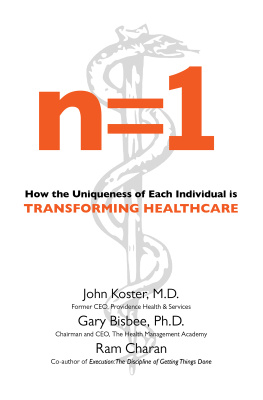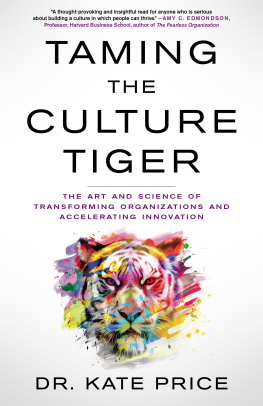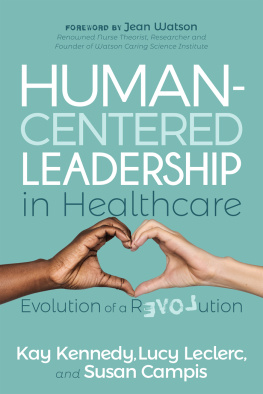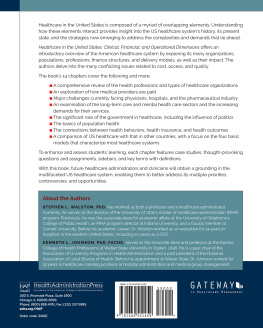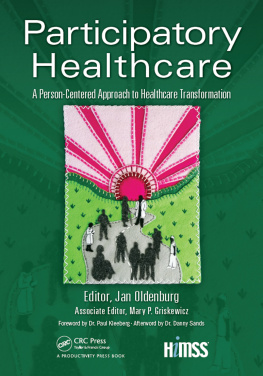Knowledge is having the right answer.
Wisdom is having the right question.
O ur experience with leaders of successful organizational transformation underscores the importance of incisive questions and inquiry. This begins with the leaders self-reflection and personal inquiry. What does change mean to me? How must I change? How do I feel about that? Deep understanding of the environment is then gained through fearless inquiry in and out of the organization, especially with customers. The successful leaders cultivate an organizational culture of inquisitiveness. In uncertain times, incisive questioning is the best way for organizations to learn. Answering questions is learning. Answering the best questions leads to the best choices.
Shortly before the passage of the Patient Protection and Affordable Care Act (ACA), there was a dialogue among a group of healthcare CEOs. They were asked if there would be a transformation of healthcare even if the ACA didnt pass. The leaders uniformly responded that the ACA could be a factor; however, other forces were causing healthcare to be transformed, regardless of the passage of the ACA. At that time, they saw the impact of the ACA as uncertain, but the forces of transformation were undeniable. Since its passage, the ACA has variably influenced all sectors of healthcare. However, as those healthcare leaders correctly predicted, the transformation of healthcare has accelerated, well beyond the impact of the ACA.
Healthcare Transformation
The underlying catalysts for healthcare transformation are digitization and scientific innovation, both of which, by their nature, are disruptive. The impact of these forces on healthcare is amplified by the societal reality of unsustainable healthcare costs at historical growth rates. These healthcare costs are driving the transference of risk. This risk transference is seen in health benefit and payment model changes.
The most dramatic influence of the transformational forces is on individuals. Access to information accelerates the desire of individuals to act, behave, and be treated uniquely. Individuals have choices and options in every aspect of their lives. Access to more and timely information increases their options. Individuals will choose the option most suited to their unique needs. This is what we mean by n = 1 and why we titled the book accordingly.
The n = 1 symbolizes our uniqueness as individuals in todays digitized world. The expression n = 1 is used in mathematics and computer programming to ask the question How many? In this book, n represents persons; thus, the notation n = 1 refers to an individual. The n = 1 represents a biologically, psychologically, and sociologically unique individual. Throughout the world, each person, using his resources and capabilities, chooses options that fit his unique needs, which we refer to as n = 1.
The impact of the n = 1, powered by the disruption caused by digitization and scientific innovation, cannot be overstated. It is changing every aspect of our global lives through interconnectivity, social networking, democratization of information, and increasing customization of products and services. Most industries have already undergone levels of transformation, and some have been profoundly changed or rendered obsolete.
Healthcare transformation is in its infancy, but it is unstoppable. It is beginning to influence and will soon create havoc in the structure and in the competitive landscape of the healthcare industry. Let us be clear, given the current pace of transformation, that the skills needed to lead healthcare organizations will be dramatically different in the future.
The term transformation can be overused, but it is not in this instance. It describes healthcares future without exaggeration. Transformation refers to the fundamental changes a business, profession, or industry must make in order to be successful when there is a shift in the market environment. Sometimes the shifts are easily seen, and the changes required are readily apparent. Other times the shifts are so profound and fundamental that their connection to the business environment can be difficult for leaders to see.
The n = 1, empowered by the transformative forces of digitization and scientific innovation, challenges the fundamental structure and assumptions of healthcare. The societal context of unsustainable healthcare costs and resulting changes in payment models further accelerate transformation. Healthcare leaders are looking deeply into the changes that are occurring, and they are identifying the fundamental structures and assumptions that are likely to be transformed.
Lessons from Other Industries
The n = 1 has already transformed many industries, if not most. A useful example is the music industry. The early peer-to-peer music file-sharing service Napster transformed the music industry more than a decade ago. Through Napster, individuals could get the music they wanted, through their computer, and for free. Even in the early days of the Internet, this level of access to intellectual property seemed too good to be true. The flood of downloading MP3 files strained college computer networks. The music industry and recording artists took legal action against Napster; Napster lost many legal challenges and changed their systems, but the downloading continued. The music industry began legal action against individuals in an attempt to regain control of their product.
Individuals saw the opportunity to customize music for their unique desires. The coincident development of MP3 players allowed people to create their own playlists. When the music industry responded by suing its customers, leaders did not have a plan beyond defending their product. Music industry leaders could not imagine how they would maintain control in a world where consumers had such individualized choice and access to copyrighted music. Previously, production executives sitting in smoke-filled rooms selected fourteen songs for an album, forcing consumers to buy the entire lot even if they only wanted one or two songs. Following the introduction of Napster, album sales began a long, steady decline.
The whole process of the industry, from finding artists all the way through the distribution of the content via CD, was being challenged. The music industry did not face the music. There were those entrepreneurs outside the industry who saw opportunity. They were unencumbered by the business model and by history. Apple filled the device niche with a stylish and easy-to-use MP3 player, the iconic iPod. Apple was not the first to enter the MP3 player market, but it provided a legal, easy-to-use music downloading service, iTunes. The game changed. The two transformative and disruptive components of the sale of musicdigitization (commercialized as iTunes) and scientific innovation (sold as the iPod)changed everything. The music industry didnt like it, but it had few alternatives.

